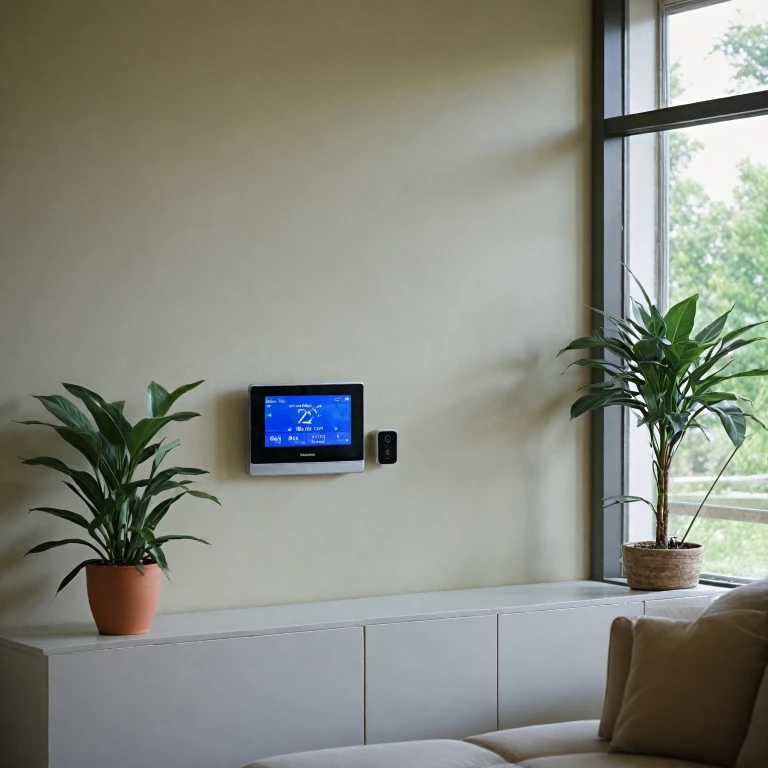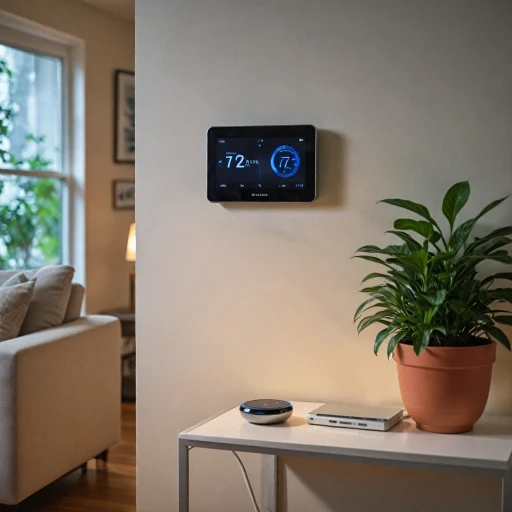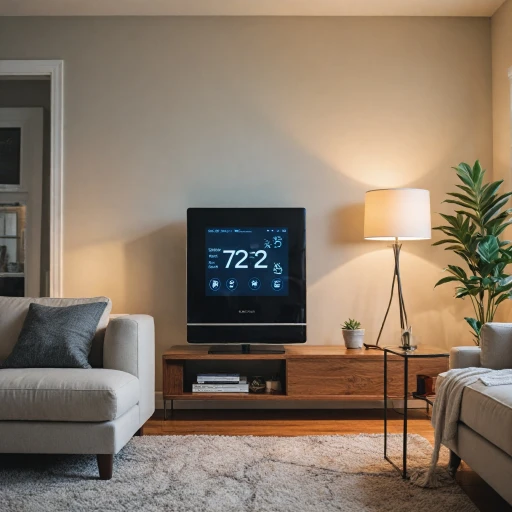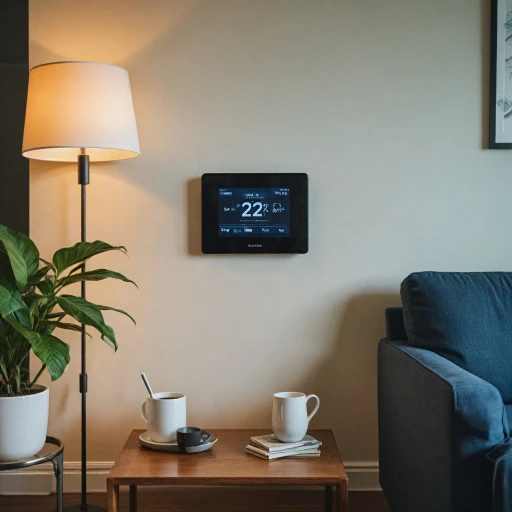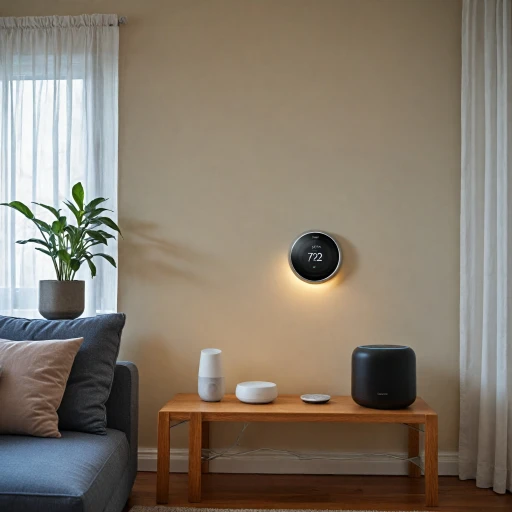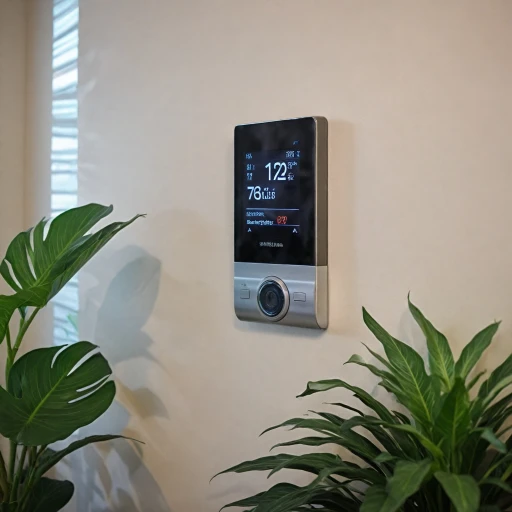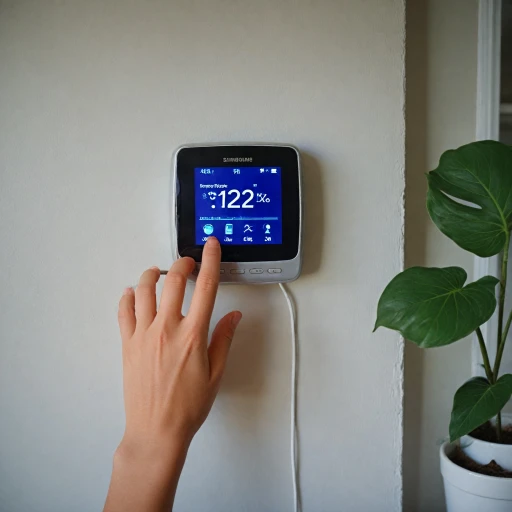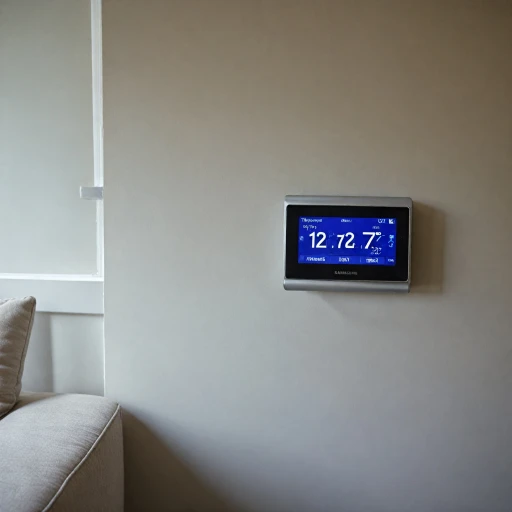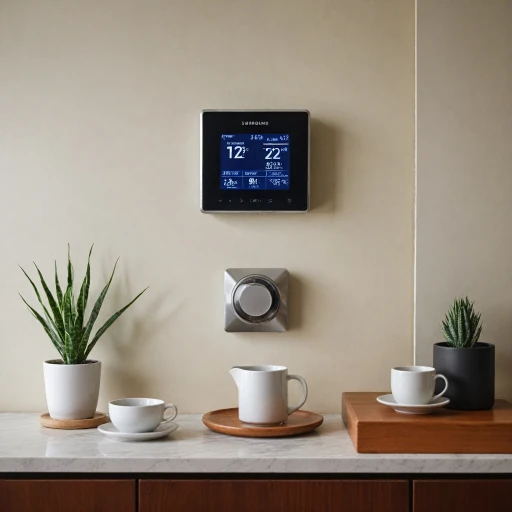
Understanding the Benefits of Smart Thermostats
Exploring the Advantages of Smart Thermostat Integration
Deciding to swap your traditional thermostat with a smart version can lead to a variety of benefits that enhance your home's cooling and heating efficiency. These advanced thermostats are designed to work seamlessly with your existing system, offering features that cater to modern lifestyles while promoting energy conservation. Smart thermostats are particularly known for their ability to learn your habits over time. Whether you have a heat pump or a standard HVAC system, these devices can adapt to your preferred temperatures. They can help optimize both your heating and cooling systems, potentially reducing your energy bills. Here are some key advantages to note:- Energy Savings: By automatically adjusting temperatures when you’re away, these devices help save energy, ensuring your home’s air and heat systems aren’t overused.
- Remote Control: With programmability and smartphone integration, you can tweak your thermostat settings from virtually anywhere. Imagine adjusting your home's temperature on your way back from work.
- Detailed Insights: Many smart thermostats offer insights into your energy usage patterns, which can be invaluable for making informed choices about your heating and cooling needs.
- Integration with Digital Assistants: Some models integrate with digital assistants like Alexa, enhancing their functionality through voice commands and smart home connectivity.
Assessing Compatibility with Your Current System
Evaluating Your Current System's Compatibility
When planning to replace your old thermostat with a smart upgrade, the first step is examining your existing system. This process involves a few crucial steps that ensure smooth integration and functionality.Before embarking on your smart thermostat journey, it’s essential to verify the compatibility of your HVAC system. Start by checking whether your system is built around heating, cooling, or both. Smart thermostats work with various systems, but it’s vital to confirm specifics like the presence of a heat pump or a dual fuel system.
Consider assessing the wiring setup too. Many modern smart thermostats require a C-wire (common wire) to function correctly. This wire provides continuous power to your thermostat, allowing it to connect to Wi-Fi networks and perform other advanced features. If your current setup lacks a C-wire, it might be necessary to install one, or you might explore models that can work without it by visiting this guide on the role of the C-wire in smart thermostats.
Recognizing the Wiring Setup
Whenever you're inspecting your thermostat housing, take note of the wires. Typically, programmable thermostats feature a manageable number of wires. Be cautious to properly label them when you remove the interface, as this will streamline the installation of your smart alternative.
If you're transitioning from an analog thermostat, additional attention to detail will be needed. Analog systems might not have all the necessary wires for a smart setup, but most modern thermostats come with wire adapters to bridge this gap.
After resolving potential wiring issues, focus on understanding whether your HVAC system is compatible with digital thermostats. Most modern systems are, but older setups may require a bit more effort. This might include modifications to manage variations in power supply and features like a programmable thermostat's capacity to manage both heat and cooling systems efficiently.
Taking time to assess your current system's compatibility will very likely save time and energy, ensuring smooth sailing when connecting your replacement thermostat. Proper preparation will maximize efficiency and help reduce energy bills in your pursuit of smarter, customized home temperature management.
Choosing the Right Smart Thermostat for Your Needs
Identifying Your Priorities
When selecting a smart thermostat, it's crucial to align your choice with your personal priorities and system requirements. Do you need one that primarily focuses on reducing energy bills, or is ease of use more critical for you? Understanding your goals will help you choose a model that complements your existing HVAC system and your usage patterns.Evaluate Smart Features
Smart thermostats come packed with various advanced features such as programmable settings, remote control via mobile apps, and AI-driven temperature adjustments. Consider features that will make your daily temperature management easier and more efficient, like geofencing for automatic adjustments when you're home or away, or compatibility with voice assistants for hands-free temperature changes.Compatibility Matters
Before committing to a smart thermostat, check the compatibility with your existing HVAC system, including wiring and heat sources like heat pumps or conventional heating cooling systems. Some smart thermostats, such as those compatible with the Nest Learning Thermostat, offer flexibility and wide-ranging compatibility that are particularly helpful if your system configurations are complex.Energy Savings and Cost
If one of your primary goals is to reduce energy consumption, prioritize models known for their energy-saving features. Look for thermostats equipped with learning capabilities that adapt to your preferences over time, or programmable thermostats that allow for detailed scheduling. Over time, these features can contribute significantly to lowering your energy bills.Simplicity and Integration
Consider how easy the thermostat is to install and integrate with existing smart home systems. If you're not confident in your own installation skills, opting for a model with straightforward instructions or professional installation options can be beneficial. Ensure the device works seamlessly with your other smart appliances to enhance overall smart home efficiency. For additional guidance specific to certain thermostats, you might want to explore more about your particular type of thermostat. A good starting point could be understanding your Lux thermostat as it can provide comprehensive insights into compatible systems and features suited to your needs. Visit this comprehensive guide for more detailed information.Preparing for Installation: Tools and Tips
Getting Ready for Your Smart Thermostat Installation
Installing a smart thermostat is a smart move that brings numerous benefits, including energy savings and enhanced temperature control in your home. However, before jumping into the installation process, it is crucial to be well-prepared. Here are some essential tools and tips to help you get started.
Gathering the Necessary Tools
First, ensure you have the right tools on hand to make the process smoother. Most smart thermostats come with a comprehensive installation guide, but generally, you will need the following:
- Screwdriver set (Phillips and flathead)
- Drill and drill bits for wall mounting
- Level to ensure accurate placement
- Wire cutters/strippers for trimming and connecting wires
- Voltage tester to check electrical connections
- Tape measure for precise placement
- Pencil for marking drilling points
Preparing Your HVAC System
Your HVAC system is the backbone of your home's heating and cooling, and proper preparation is vital for a smooth thermostat replacement. Before proceeding with the installation, make sure to:
- Turn off the power to your HVAC system to prevent any electrical mishaps.
- Identify and label your existing thermostat wires; this will make reconnections easier.
- Remove your old analog or programmable thermostat carefully and retain mounting plates for future reference.
Checking Your Current Thermostat Housing
Take some time to evaluate your current thermostat housing. It is important to ensure that the replacement thermostat will fit within the designated space. If the current housing is not suitable, consider if adjustments during the installation may be necessary.
Understanding Your Home's Wiring System
Smart thermostats often work with low-voltage HVAC systems, which typically have a 'C-wire' or common wire. This wire provides continuous power to the thermostat, enabling its smart features such as programmable schedules and energy tracking. If your system lacks a C-wire, adapters or professional installation might be needed to ensure optimal functionality.
Envisioning the Upgrade
An effective smart thermostat installation requires a bit of planning. Understanding your home’s heating and cooling dynamics can help you strategize for improved comfort and energy efficiency. Taking these preparation steps will streamline the installation and set you up for maximizing the benefits of your new smart thermostat.
Step-by-Step Guide to Installing Your Smart Thermostat
Setting Up for Success: Step-by-Step Installation Process
Removing your old thermostat marks the beginning of your journey to smarter temperature control. Start by ensuring the power to your heating and cooling system is turned off. This simple step will help prevent any accidents or damage to the system during installation.- Remove the Old Thermostat: Gently detach the existing thermostat from its housing. Take care not to damage the wires as you extract it.
- Take Note of the Wiring: Before removing, label each wire according to its connection with the existing terminals. This will facilitate the transfer to the new smart thermostat, reducing the risk of mistakes.
- Prepare the Thermostat Housing: With the old unit removed, inspect the base plate and clean the area, ensuring there's no debris or dust. This prepares the housing for the replacement thermostat.
- Mount the Smart Thermostat: Attach the new thermostat's base plate to the wall where the previous one was removed. Ensure it is level and secure before proceeding.
- Wire the New Thermostat: Carefully connect the existing wires to the new thermostat, following the labels you prepared earlier. Make sure the wires are securely fastened, and there is a tight connection for optimal functionality.
- Attach and Power: Mount the main unit onto the base plate, ensuring a snug fit. Once in place, turn the power back on and watch as your new control engine breathes life into your heating and cooling systems.
Maximizing the Benefits of Your New Smart Thermostat
Enhancing Efficiency and Comfort
After your smart thermostat has been installed, it's essential to maximize its benefits. This begins with familiarizing yourself with its capabilities. Smart thermostats often come with features such as remote temperature control, learning algorithms that adjust settings based on your habits, and integration with other smart home devices. These features help optimize energy use, ultimately reducing energy bills.
Programming and Scheduling
One of the standout advantages of smart thermostats is their programmable nature. Ensure you configure your system’s schedule to match your daily routine, addressing both your heating and cooling needs efficiently. Set the thermostat to lower the temperature when you're away, and resume your preferred settings shortly before you return. This approach not only enhances comfort but also significantly contributes to energy conservation.
Maintaining and Monitoring Your System
Regularly checking the performance of your HVAC system via the thermostat’s app can help identify inefficiencies. These thermostats often provide insights into energy usage, helping you make informed decisions. Look out for notifications about necessary maintenance tasks, like changing filters.
Using Voice and App Controls
Most smart thermostats offer the convenience of controlling your home’s temperature through voice commands or smartphone apps. Whether you're on your way home or comfortably settled on your couch, adjust your home’s heating or cooling without having to approach the unit directly. This hands-free control can indeed make life a bit easier.
Exploring New Features and Updates
Manufacturers frequently release new software updates to enhance the functionality of smart thermostats. Regularly check and install updates to benefit from improved features and address potential security vulnerabilities. Stay informed by visiting manufacturer websites or joining forums dedicated to smart thermostats.
